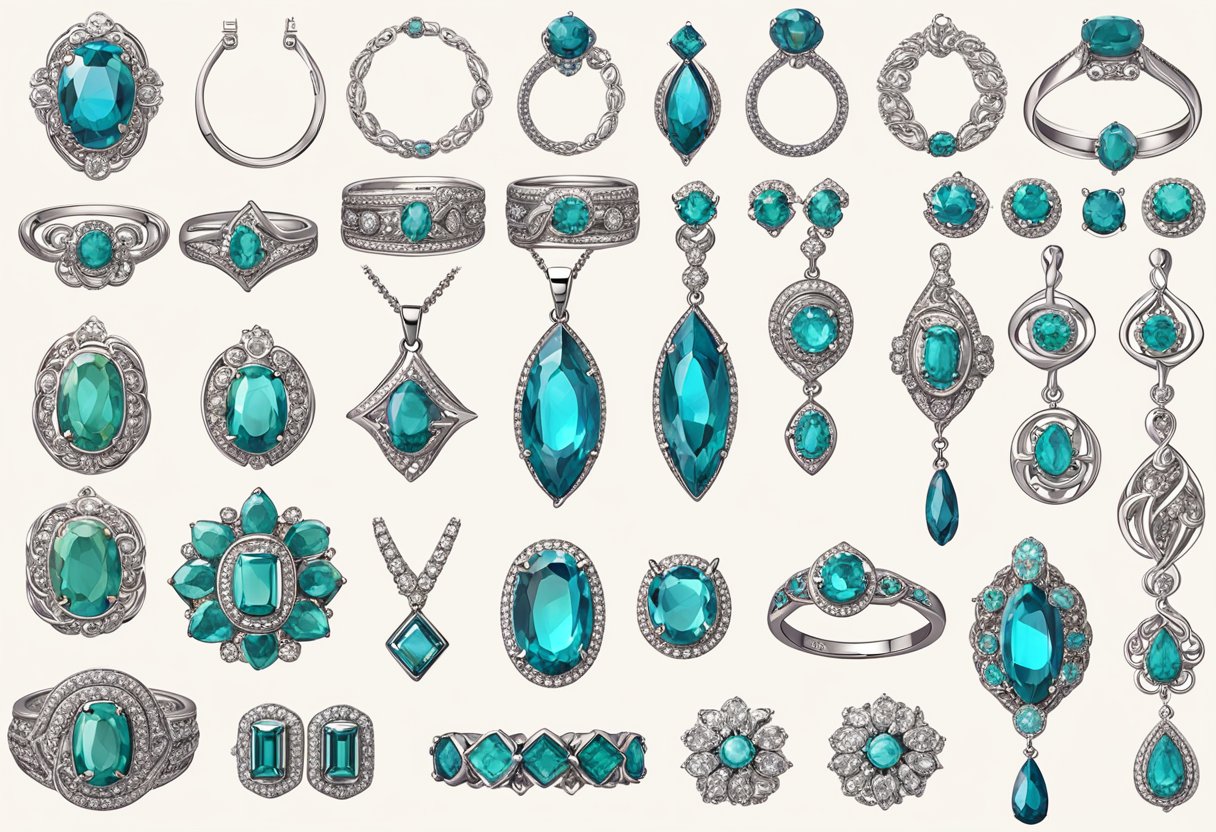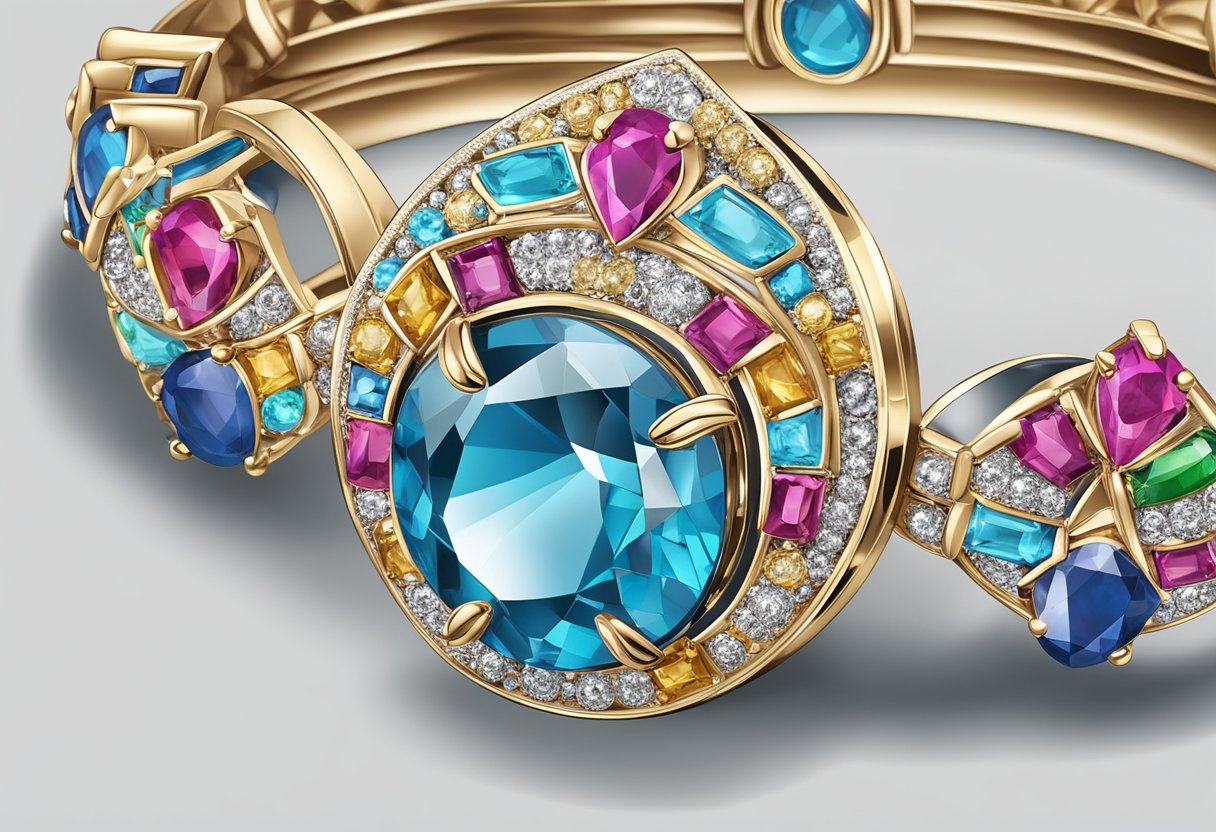Importing jewelry from China can be a profitable business venture for entrepreneurs looking to expand their product offerings. With China being the world’s largest producer of jewelry, it offers a wide range of high-quality products at competitive prices. However, importing jewelry from China requires careful planning, research, and knowledge of the market.
To start importing jewelry from China, one must first understand the Chinese jewelry market. This includes knowing the latest trends, styles, and materials used in making jewelry. It is also essential to identify the target market and the type of jewelry that will appeal to them. This knowledge will help in finding the right suppliers and products to import.
Finding reliable jewelry suppliers in China is crucial to the success of the importing process. It is recommended to work with suppliers who have a good reputation, experience in the industry, and can provide quality products at competitive prices. Conducting due diligence and verifying the supplier’s credentials is crucial to avoid scams and fraud. Once the right supplier is found, the importing process can begin.
Key Takeaways
- Understanding the Chinese jewelry market is crucial for successful importing.
- Finding reliable jewelry suppliers is essential to avoid scams and fraud.
- Proper planning and knowledge of the importing process can lead to a profitable business venture.
Understanding the Chinese Jewelry Market
China is the world’s largest producer and exporter of jewelry, with a history of over 5,000 years in the jewelry industry. The Chinese jewelry market is vast and diverse, offering a wide range of products at different price points. Understanding the Chinese jewelry market is essential for anyone looking to import jewelry from China.
The Chinese jewelry market is driven by both domestic and international demand. In recent years, the domestic demand for jewelry has been on the rise due to the growing middle class and increasing disposable income. The demand for high-end luxury jewelry has also increased, with many Chinese consumers willing to pay a premium for quality and craftsmanship.
The Chinese jewelry industry is highly competitive, with many manufacturers and suppliers vying for a share of the market. The industry is also fragmented, with many small and medium-sized enterprises (SMEs) operating in the market. However, there are also some large players in the market, such as Chow Tai Fook and Luk Fook Holdings, which dominate the high-end luxury jewelry segment.
The Chinese jewelry market has a rich history, with traditional Chinese jewelry designs dating back thousands of years. However, in recent years, there has been a shift towards more contemporary and Western-influenced designs. This trend has been driven by changing consumer preferences and the desire to appeal to international markets.
In summary, the Chinese jewelry market is vast, diverse, and highly competitive. Understanding the market dynamics, demand trends, and the history of the Chinese jewelry industry is crucial for anyone looking to import jewelry from China.
Finding Reliable Jewelry Suppliers
Importing jewelry from China requires finding a reliable supplier. There are several ways to find jewelry manufacturers and suppliers in China. One of the most popular ways is to use online marketplaces such as Alibaba and AliExpress. These marketplaces connect buyers with suppliers and manufacturers in China.
When searching for a reliable jewelry supplier, it is important to consider the following factors:
- Supplier Verification: Look for suppliers that have been verified by the marketplace or a third-party verification service. This helps ensure that the supplier is a legitimate business and can be trusted.
- Product Quality: Check the supplier’s product quality by requesting samples or reviewing their product specifications. Make sure the supplier’s products meet your quality standards.
- Pricing: Compare prices from different suppliers to ensure you are getting a fair price. Keep in mind that the cheapest option may not always be the best option.
- Minimum Order Quantity (MOQ): Consider the supplier’s MOQ when deciding whether to work with them. Some suppliers may have a high MOQ, which may not be feasible for small businesses.
- Lead Time: Ask the supplier about their lead time and shipping options. Make sure their lead time fits with your business needs.
- Communication: Good communication is key when working with a supplier. Look for suppliers that are responsive and easy to communicate with.
In addition to online marketplaces, there are also trade shows and sourcing agents that can help you find reliable jewelry suppliers in China. Made-in-China is another platform that can be used to find suppliers.
When looking for a reliable supplier, it is important to do your research and take the time to find the right supplier for your business. Working with a reliable supplier can help ensure that you receive high-quality products at a fair price.
Types of Jewelry and Materials

When it comes to importing jewelry from China, there are many types of jewelry and materials to choose from. Some of the most popular types of jewelry include rings, necklaces, earrings, bracelets, and pendants. These can be made from a variety of materials, including precious metals such as gold and silver, as well as stainless steel, aluminum, and titanium.
Fine jewelry is also available, which is made from precious metals and often includes gemstones such as diamonds, zirconia, and Swarovski crystals. Precious stones such as rubies, sapphires, and emeralds are also popular choices.
In addition to precious materials, there are also many options for jewelry made from semi-precious stones, beads, crystals, wood, shells, and coconut shell. Alloy is another popular material for jewelry, which is a combination of two or more metals.
When choosing materials for jewelry, it is important to consider the quality and durability of the materials. For example, precious metals are often more expensive but also more durable and long-lasting. Stainless steel is a more affordable option that is also durable and resistant to tarnishing.
Overall, there are many options for importing jewelry from China, with a wide variety of materials and styles available to choose from. Whether looking for fine jewelry or more affordable options, there is sure to be something to suit every taste and budget.
Importing Process and Documentation
When it comes to importing jewelry from China, there are several steps involved in the process. One of the most important steps is to ensure that all the necessary documentation is in order. This includes the import license, bill of lading, packing list, commercial invoice, and certificate of origin.
It is also important to conduct a thorough inspection of the jewelry before it is shipped. This can be done by either visiting the supplier in China or hiring a third-party inspection company to do it for you. This will help ensure that the jewelry meets your quality standards and specifications.
Once the jewelry has been inspected and approved, it can be exported from China. This is where a customs broker can be helpful in navigating the complex customs regulations and procedures. They can help ensure that all the necessary paperwork is in order and that the jewelry is cleared through customs without any issues.
It is important to note that there may be duties and taxes that need to be paid when importing jewelry from China. These can vary depending on the type of jewelry, its value, and the country of import. It is recommended to consult with a customs broker or tax professional to understand the specific duties and taxes that may apply to your particular situation.
Finally, it is important to consider insurance when importing jewelry from China. This can help protect against any damage or loss that may occur during shipping. It is recommended to work with a reputable insurance provider to ensure that you have adequate coverage for your jewelry imports.
In summary, importing jewelry from China involves several steps, including documentation, inspection, export, customs clearance, duties and taxes, and insurance. By following these steps and working with experienced professionals, you can successfully import high-quality jewelry from China for your business.
Marketing and Selling Imported Jewelry

Once the imported jewelry has been received and quality-checked, it’s time to start marketing and selling the products. The first step is to identify the target market and develop a marketing strategy that will appeal to them. Retailers can sell imported jewelry through their own brick-and-mortar stores or online on platforms like Amazon, eBay, or their own website.
When it comes to online sales, having a strong presence on Google and other search engines is crucial. Retailers should conduct thorough research on their competitors and identify the keywords that their target market is searching for. By optimizing their website and product listings for these keywords, they can improve their search engine rankings and attract more potential customers.
Pricing is another important factor to consider when marketing and selling imported jewelry. Retailers should research the prices of their competitors and set their prices accordingly. While it may be tempting to undercut the competition, it’s important to ensure that the prices are still profitable for the business.
In addition to traditional retail methods, dropshipping is another option for selling imported jewelry. This allows retailers to sell products without having to hold inventory, as the supplier will ship the products directly to the customer. However, it’s important to choose a reliable and trustworthy dropshipping partner to ensure that the products are delivered on time and in good condition.
Overall, marketing and selling imported jewelry requires a combination of research, strategic pricing, and effective marketing techniques. By understanding the target market and developing a strong online presence, retailers can successfully grow their jewelry business and increase their sales.
